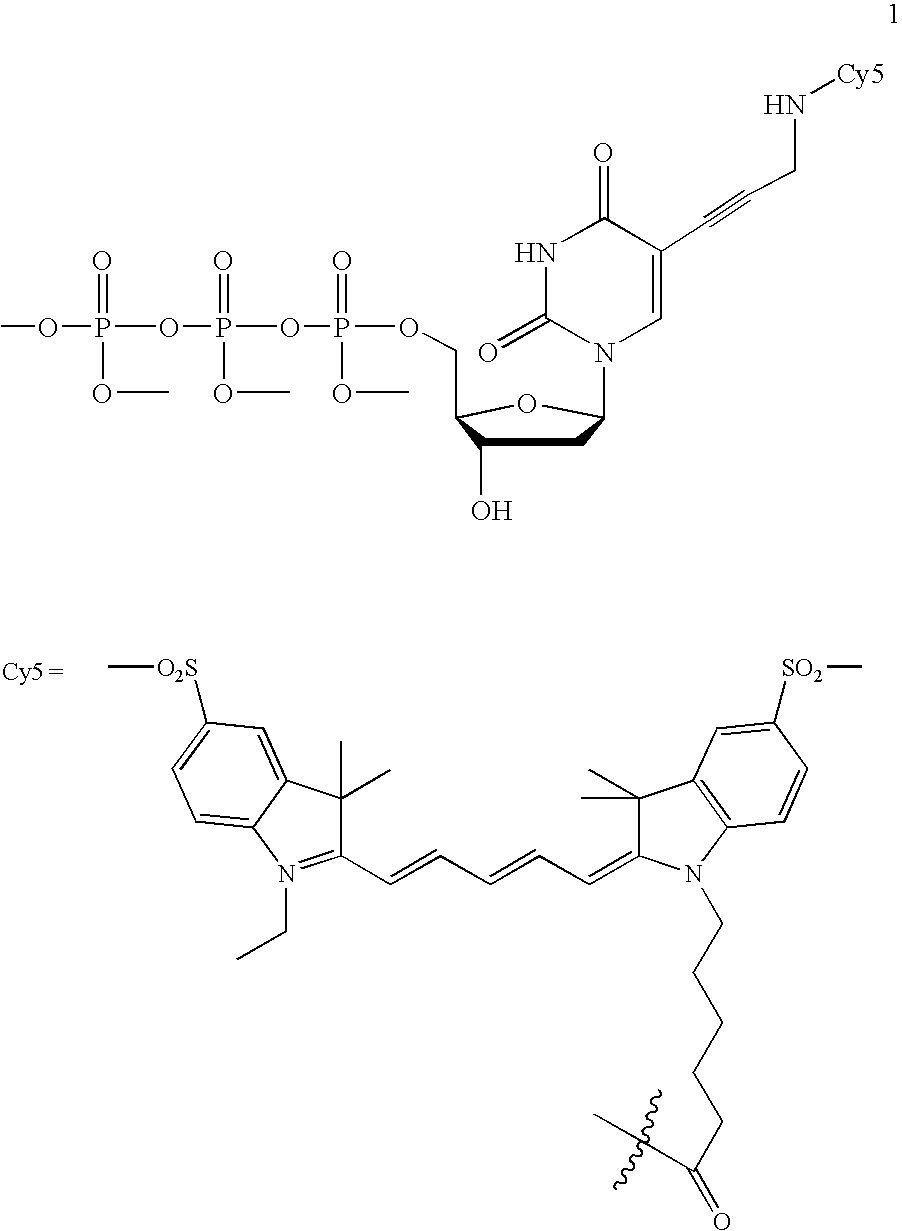Fluorescently labeled nucleoside triphosphates and analogs thereof for sequencing nucleic acids
- Summary
- Abstract
- Description
- Claims
- Application Information
AI Technical Summary
Benefits of technology
Problems solved by technology
Method used
Image
Examples
Embodiment Construction
[0040] The invention provides methods for sequencing single molecules of nucleic acids. A nucleic acid can come from a variety of sources. For example, nucleic acids can be naturally occurring DNA or RNA isolated from any source, recombinant molecules, cDNA, or synthetic analogs, as known in the art. For example, a nucleic acid may be genomic DNA, genes, gene fragments, exons, introns, regulatory elements (such as promoters, enhancers, initiation and termination regions, expression regulatory factors, expression controls, and other control regions), DNA comprising one or more single-nucleotide polymorphisms (SNPs), allelic variants, and other mutations. Also included is the full genome of one or more cells, for example cells from different stages of diseases such as cancer. The nucleic acid may also be mRNA, tRNA, rRNA, ribozymes, splice variants, antisense RNA, and RNAi. Also contemplated according to the invention are RNA with a recognition site for binding a polymerase, transcrip...
PUM
| Property | Measurement | Unit |
|---|---|---|
| Nanoscale particle size | aaaaa | aaaaa |
| Nanoscale particle size | aaaaa | aaaaa |
| Acidity | aaaaa | aaaaa |
Abstract
Description
Claims
Application Information
 Login to View More
Login to View More - R&D
- Intellectual Property
- Life Sciences
- Materials
- Tech Scout
- Unparalleled Data Quality
- Higher Quality Content
- 60% Fewer Hallucinations
Browse by: Latest US Patents, China's latest patents, Technical Efficacy Thesaurus, Application Domain, Technology Topic, Popular Technical Reports.
© 2025 PatSnap. All rights reserved.Legal|Privacy policy|Modern Slavery Act Transparency Statement|Sitemap|About US| Contact US: help@patsnap.com



